Car Brand Names and Symbols: Heritage!
Luxury, performance, and heritage are a few words that come to mind when discussing car brand names and symbols.
Brands like Ferrari, Mercedes-Benz, and BMW have iconic emblems that represent their storied histories and the quality of their vehicles.
Car brand names and symbols are more than just identifiers; they are the essence of the brand’s identity and ethos. The emblem of a car often reflects the brand’s historical background, values, and market position.
For instance:
These symbols have become synonymous with the characteristics for which these brands are known, such as luxury, performance, and technological innovation.
The emblems adorning the grilles and hoods of cars like the Lamborghini bull or the Audi rings are more than just logos; they are badges of honor representing decades of automotive excellence.
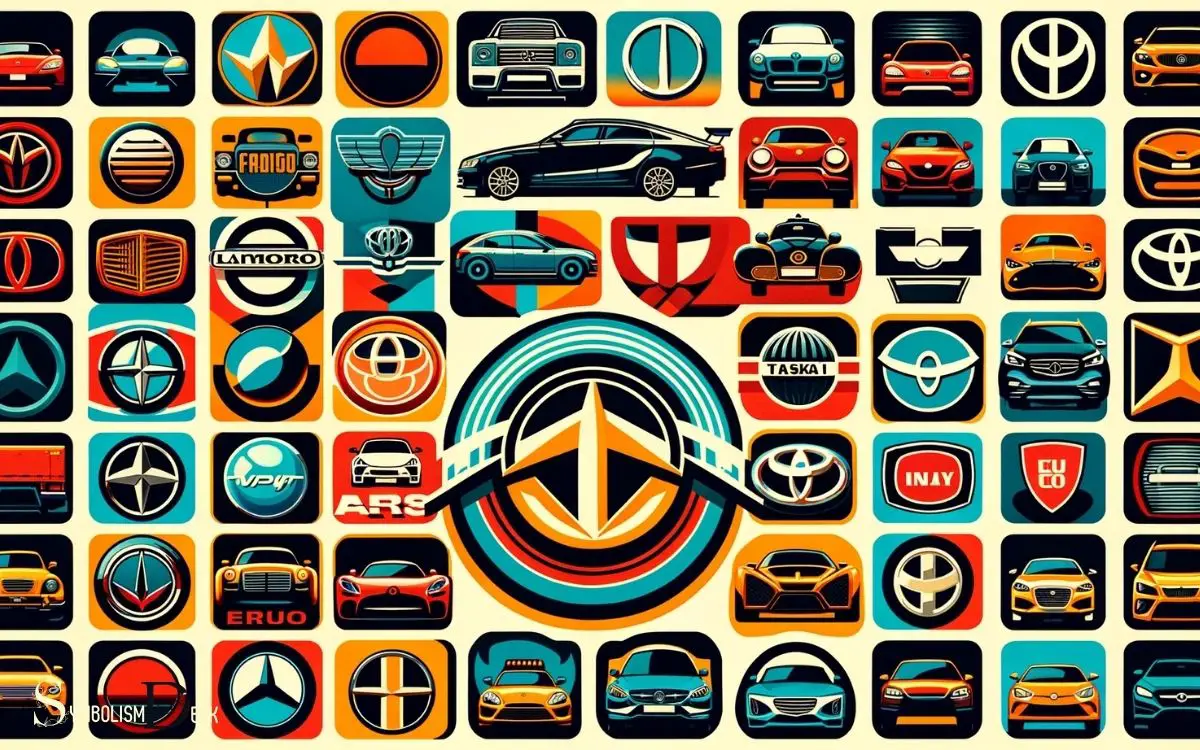
Key Takeaway
Origins of Famous Car Logos
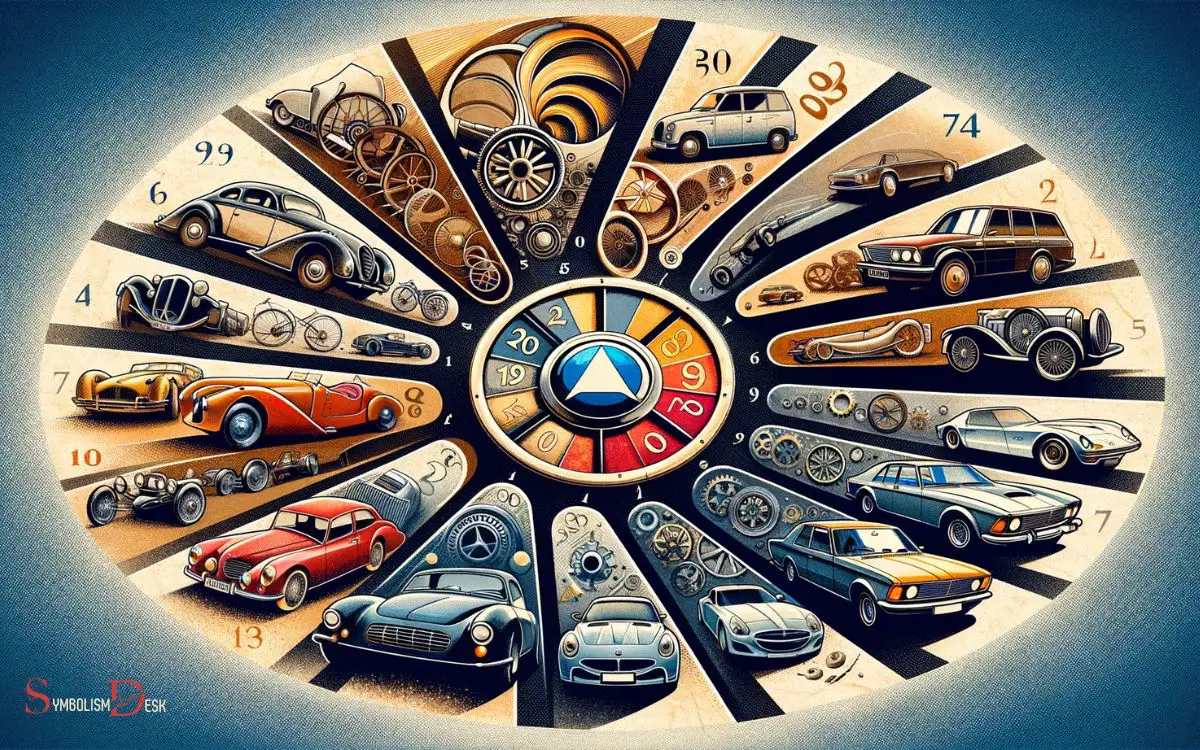
The origins of famous car logos can be traced back to the early 20th century when automakers began to distinguish their brands with unique symbols. These logos were not just random designs; they often held deep significance.
For instance, the iconic BMW logo represents a rotating aircraft propeller, paying homage to the brand’s aviation history. The famous Mercedes-Benz three-pointed star symbolizes the brand’s dominance over land, sea, and air.
The prancing horse in the Ferrari logo originates from a World War I flying ace, and the intertwined letters of Volkswagen reflect the company’s name and mission.
These logos have become powerful symbols, embodying the values and history of the car manufacturers they represent, leaving an indelible mark on the automotive industry.
Evolution of Brand Names
The evolution of car brand names has been influenced by historical naming practices, symbol evolution over time, and the impact of cultural shifts.
Understanding how these factors have shaped the development of brand names can provide insights into the automotive industry’s adaptation to changing societal trends and consumer preferences.
Analyzing the evolution of brand names reveals the intricate relationship between language, design, and consumer perceptions.
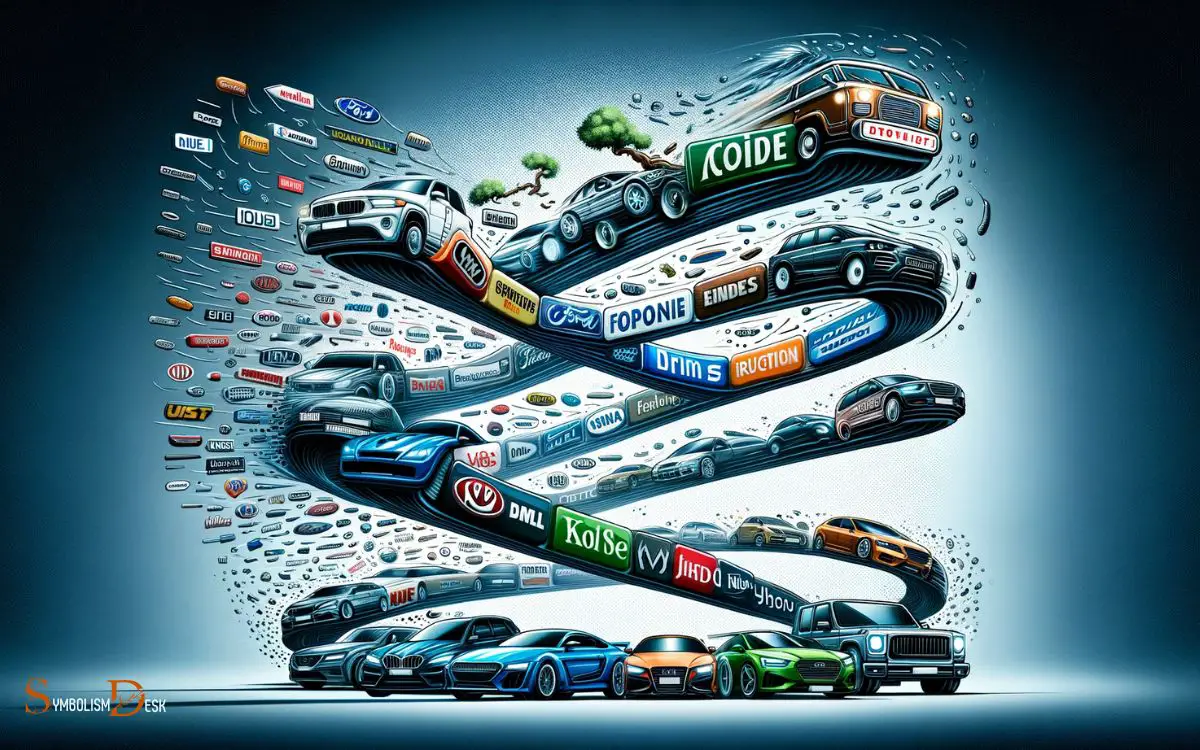
Historical Naming Influences
During the evolution of car brand names, historical influences have played a significant role in shaping the nomenclature of various automobile manufacturers.
The historical naming influences can be traced back to the founders’ surnames, geographic locations, or even significant events of the time.
For example, Ford Motor Company, named after its founder Henry Ford, directly reflects the historical influence of the founder’s surname.
Similarly, Chevrolet, named after its co-founder Louis Chevrolet, showcases the historical influence of the founder’s name.
Some brands have also been influenced by geographic locations, such as the Cadillac, named after the French explorer Antoine Laumet de La Mothe, sieur de Cadillac, who founded Detroit, Michigan.
Understanding these historical naming influences provides insight into the rich and diverse heritage behind the brand names of various automobile manufacturers.
Symbol Evolution Over Time
The car brand names’ symbols have evolved over time, reflecting changes in design, technology, and brand identity. These symbols have undergone significant transformations, often mirroring the evolution of the company itself. For instance, many iconic logos have been simplified or modernized to align with contemporary aesthetics, while others have incorporated historical elements to maintain a sense of legacy. The Nissan Z badge meaning is a perfect example of this balance, as it represents the fusion of heritage and progression, paying homage to the brand’s sports car lineage while embracing a sleek, modern look. Such evolutions not only enhance brand recognition but also deepen emotional connections with loyal customers.
For instance, the iconic Mercedes-Benz logo, originally a simple depiction of a three-pointed star, has evolved into a more stylized and sleek representation, aligning with the brand’s modern image.
Similarly, the BMW logo, which began as a portrayal of a spinning propeller in a blue and white color scheme, has transformed into a more refined and minimalist interpretation.
These changes not only reflect advancements in graphic design but also signify the shifting values and aspirations of the brands.
The evolution of these symbols demonstrates the intricate relationship between visual representation and brand narrative, shaping the perception of the companies in the eyes of consumers.
This evolution has been crucial in keeping the brands relevant and appealing in an ever-changing market. As cultural shifts continue to influence consumer preferences, the evolution of car brand symbols will remain a dynamic and integral aspect of the automotive industry.
Impact of Cultural Shifts
As cultural shifts have influenced consumer preferences, car brand names have undergone significant evolution to align with changing values and aspirations.
In today’s dynamic cultural landscape, car manufacturers recognize the importance of staying relevant and appealing to diverse consumer segments.
This has led to the evolution of brand names, reflecting societal changes and embracing inclusivity, sustainability, and technological advancements.
The table below illustrates the transformation of car brand names over time, showcasing the influence of cultural shifts on the evolution of these names.
| Time Period | Traditional Brand Name | Evolved Brand Name |
|---|---|---|
| 20th Century | Ford | Ford Motor Company |
| Early 2000s | Hyundai | Hyundai Motor Company |
| Present Day | Nissan | Nissan Motor Corporation |
This evolution highlights the impact of cultural shifts on the branding strategies of car manufacturers, demonstrating a deep understanding of the changing consumer landscape.
Symbolism Behind Car Emblems
Symbolism plays a crucial role in the design of car emblems, communicating the values and identity of the respective automotive brands.
The symbolism behind car emblems can be quite intricate, with each element carefully chosen to convey specific messages.
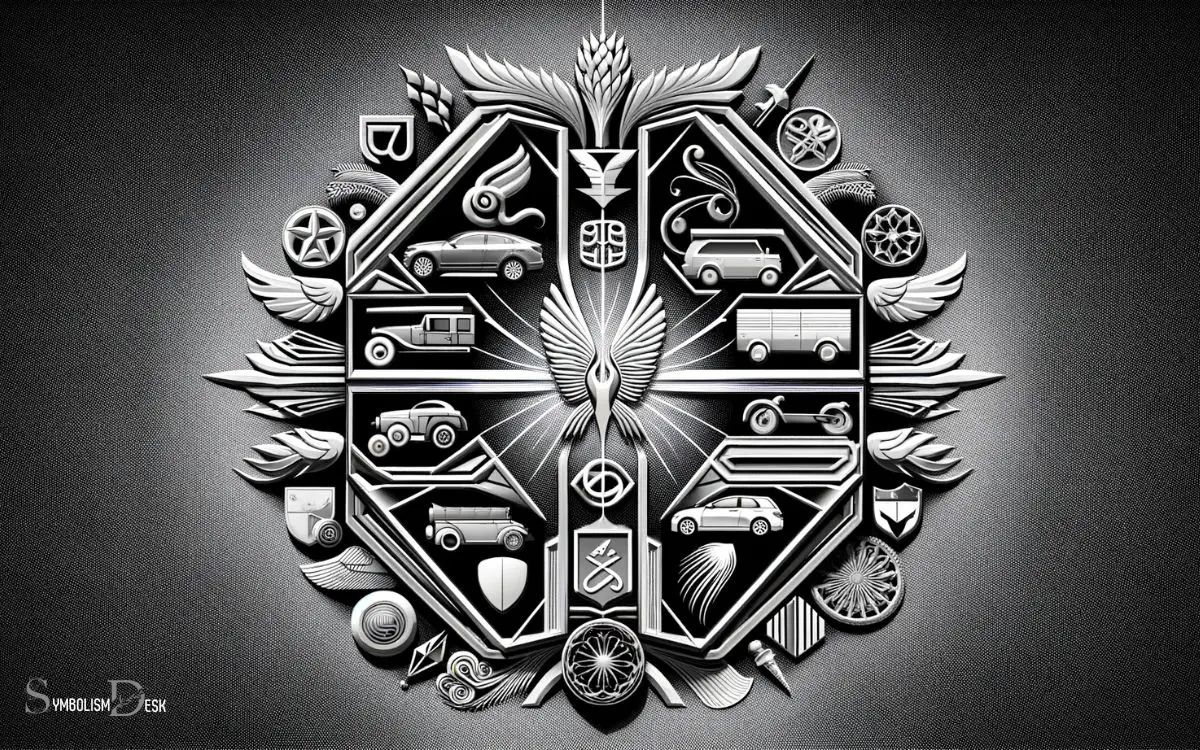
Here are some common symbolic meanings behind car emblems:
- Heritage: Many car emblems incorporate elements that reflect the brand’s history and legacy.
- Aspirations: Some emblems use symbols to represent the brand’s aspirations and future goals.
- Identity: Emblems often incorporate elements that signify the brand’s unique identity and values.
- Innovation: Certain car emblems include symbols that represent the brand’s commitment to innovation and technological advancement.
Understanding the symbolism behind car emblems provides insight into the values and aspirations of automotive brands.
This analysis seamlessly leads into the subsequent section about ‘unveiling brand identity through logos’.
Unveiling Brand Identity Through Logos
Brand logos visually represent the identity and values of car manufacturers. These logos are meticulously designed to convey a sense of the brand’s ethos, history, and aspirations.

Below is a table showcasing the logos of three popular car manufacturers and the meanings behind them:
| Car Brand | Logo | Meaning |
|---|---|---|
| Mercedes-Benz | Three-pointed star enclosed in a circle | Symbolizes the company’s dominance in land, sea, and air |
| BMW | Blue and white propeller-like logo | Represents the company’s origins in aviation and its focus on technological advancement |
| Audi | Four interlinked rings | Signifies the 1932 merger of four previously independent motor-vehicle manufacturers |
These logos serve as powerful visual identifiers, communicating the essence and values of the respective car brands.
Cultural Impact of Car Symbols

The cultural impact of car symbols can be seen in their widespread recognition and influence across various societies and demographics.
- Status and Prestige: Car symbols often convey a sense of status and prestige, influencing individuals’ perceptions of luxury, success, and social standing.
- National Identity: Some car symbols are deeply ingrained in national identity, representing a country’s automotive prowess and technological innovation.
- Consumer Preferences: Car symbols contribute to shaping consumer preferences and brand loyalty, influencing purchasing decisions and market trends.
- Pop Culture and Media: Car symbols frequently appear in popular culture and media, further solidifying their significance and impact on societal values and norms.
These symbols have become powerful icons that transcend mere representation, shaping perceptions, influencing behaviors, and reflecting the cultural fabric of diverse communities.
Legacy of Iconic Brand Names
The historical significance of car brand names and the evolution of iconic logos have played a pivotal role in shaping the automotive industry.
From the early days of automotive design to the present, these iconic brand names have left a lasting impact on consumer perception and brand identity.
Understanding the legacy of these names provides valuable insights into the cultural and historical significance of car symbols.
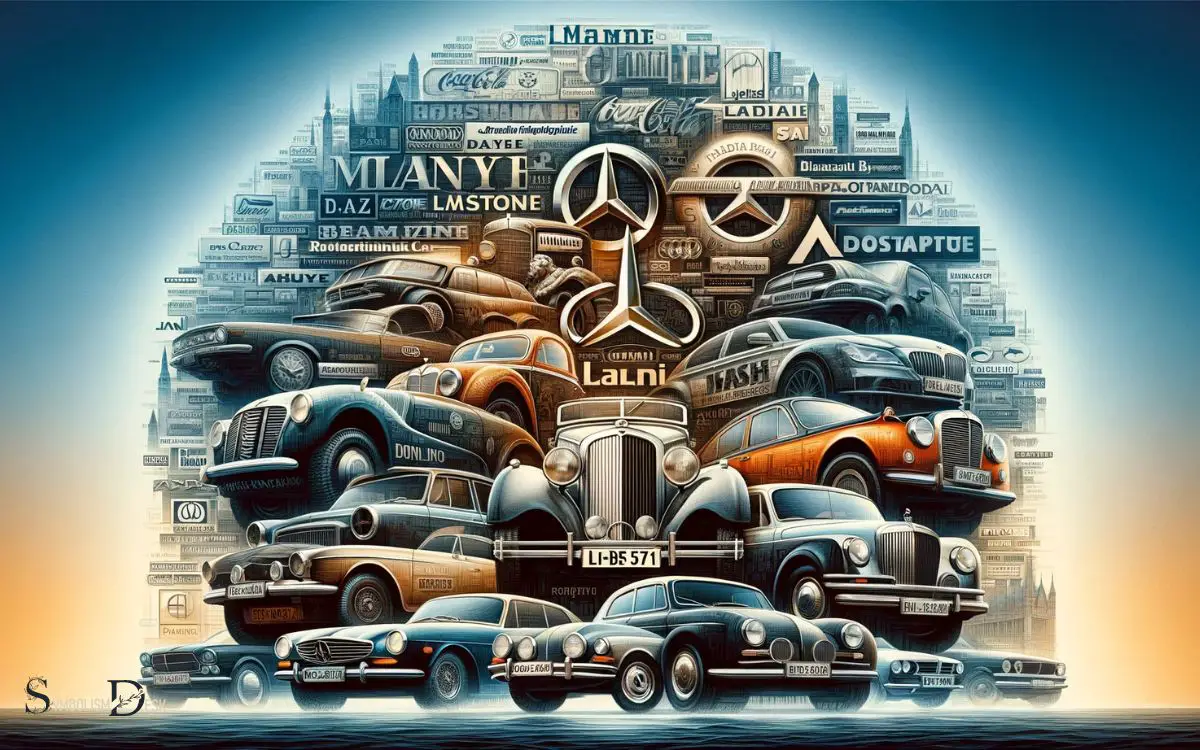
Historical Significance of Names
A significant historical legacy is attached to the names of iconic car brands, portraying their enduring influence on the automotive industry.
These brands have left an indelible mark on the world, shaping the way people perceive automobiles and contributing significantly to the advancement of automotive technology.
- Ford: The name carries the legacy of Henry Ford, the pioneering industrialist who revolutionized the mass production of automobiles.
- Mercedes-Benz: Combining the names of Mercedes Jellinek, the daughter of an important customer, and Benz, the company founder, it symbolizes the merging of two influential automotive forces.
- Ferrari: Named after Enzo Ferrari, it represents the passion, speed, and precision that the brand is renowned for.
- Chevrolet: With a namesake linked to co-founder Louis Chevrolet, it embodies the spirit of American ingenuity and performance.
Evolution of Iconic Logos
Evolving alongside their iconic brand names, the logos of these revered car manufacturers have come to symbolize the rich heritage and enduring legacy of their respective companies.
These logos have undergone significant transformations over the years, reflecting the evolution of the brands themselves and the automotive industry as a whole.
Below is a table showcasing the evolution of logos for three iconic car manufacturers:
| Brand | Original Logo | Current Logo |
|---|---|---|
| Mercedes-Benz | 1902 – Simple depiction of a three-pointed star. | Present – Three-pointed star enclosed in a circle. |
| BMW | 1917 – Circular blue and white propeller design. | Present – Similar propeller design with a 3D effect. |
| Volkswagen | 1937 – Initials “V” and “W” inside a gear. | Present – Simplified “VW” enclosed in a circle. |
These transformations not only reflect the visual evolution of the logos but also the values, vision, and identity of these automotive giants.
Impact on Brand Identity
Alongside their visual transformations, the enduring legacy of these iconic car manufacturers’ brand names and symbols has significantly impacted their brand identity.
The impact on brand identity can be seen in the following ways:
- Heritage and Tradition: Iconic brand names evoke a sense of heritage and tradition, connecting the present to the past and creating a narrative of legacy and authenticity.
- Perception of Quality: Established brand names convey a perception of quality and reliability, influencing consumer trust and confidence in the product.
- Brand Loyalty: Iconic brand names often cultivate strong brand loyalty among consumers, who associate the name with a certain lifestyle or ethos.
- Market Positioning: The legacy of iconic brand names can influence a company’s market positioning, affecting how it is perceived in the competitive landscape.
The Future of Automotive Branding

Automakers are exploring new strategies to redefine automotive branding in response to shifting consumer preferences and technological advancements.
One key area of focus is the development of electric and autonomous vehicles, which presents an opportunity for brands to establish a new identity.
Another aspect is the integration of advanced technologies in vehicles, such as AI-driven assistants and augmented reality displays, leading to a shift in how brands are perceived.
Additionally, environmental concerns have led to a growing emphasis on sustainability, pushing automakers to incorporate eco-friendly practices and messaging into their branding.
The table below provides examples of potential future branding strategies in the automotive industry.
Future Branding Strategies
- Embracing Electric and Autonomous Vehicles
- Integration of Advanced Technologies
- Emphasis on Sustainability
- Personalized Customer Experiences
Conclusion
The power of car brand names and symbols is undeniable, with 75% of consumers stating that a logo plays a significant role in their decision to purchase a car.
The evolution of these logos and the symbolism behind them have shaped the automotive industry and left a lasting cultural impact.
As car brands continue to innovate and adapt, the future of automotive branding holds endless possibilities for new iconic symbols and brand identities.






